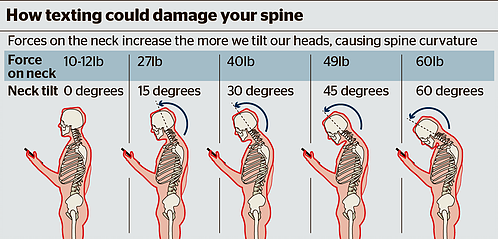Traumas:

All too often do we get in the way of our own healing processes through our thoughts. Without changing our thoughts we cannot change the physical habits that are traumatizing the health of our bodies. We participate in bad habits and use man-made substances that our bodies were not created to handle. In order for our bodies to heal we must minimize the physical substances that are impeding the natural expression of our own health. These traumas are first introduced at birth and all throughout life as we learn to walk, ride a bike, drive, play sports, and get into tangles with karma!
“The spine is by far the most damaged structure in the body, and is therefore the reason why we grow into health conditions later on in life. We all understand the importance of brushing our teeth to prevent tooth decay and gum disease. But why do we forget about the health of our spine, where the nerves to the teeth and tongue actually come from?”
Tips for excellent spinal hygiene that reduce spinal pain and trauma:
-
Exercise regularly. Your spinal bones protect the nerves which go to muscles, the same muscles that are moving the bone that is protecting your nerves. It’s like rock, paper, scissors….each relies on one another for support to maintain harmony and balance. Muscles that are not strong or have been overworked will eventually fail and will no longer be able to maintain spinal posture and motion. Yoga, pilates, tai chi, martial arts, swimming, and playing a sport are some of the best ways to maintain full body motion while supporting both strength and flexibility. Isolated and weighted exercises are not recommended unless supervised by a professional trainer as most are done incorrectly. Remember that you only get benefit our of exercise that you ENJOY! Do get on the treadmill to do cardio if you’d much rather be in the pool or taking a hike!

-
Be conscious of your posture. Avoid texting, reading, or being at a computer that is not at eye level. This will cause anterior head carriage or forward head posture which is now nicknamed “text neck.” For every one inch of curvature loss in the spine, a whopping extra 10 pounds of stress are added to your spine and joints. Everybody that I take digital films of in the office have at least 1 – 3 inches of forward head posture. That is up to an extra 45 pounds of wight on top of the 2 oz atlas vertebra in your upper neck!”

-
Head back, chin down, relax. Driving in a car places the body under several forces that are well beyond our physical limit. Not to mention whiplash is the most common injury resulting from a car accident at speeds of only 15 mph! First, enter your car by sitting upright. Tuck your chin down slightly and pull your head straight to the back of the headrest. Next readjust the steering column and mirrors to eye level with minimal blind spots. When you slowly begin to fall out of posture, you will no longer be able to see through your mirrors which should prompt you to re-assume the correct driving posture.
-
A bump on the head is serious. Anytime you bump or slam your head especially after a fall, while playing a sport, or in an accident, you should promptly get to your chiropractor to make sure the spine was not affected. Often times these kinds of traumas are brushed off to only being minor bumps and sometimes there are no symptoms. I promise you, after taking thousands of digital x-rays personally, the long term consequences are detrimental.
“About 75% of the neck injuries I see on X-ray happened during a traumatic head injury that was not cared for properly. Most of these injuries also happen early on in age during adolescence and young adulthood.” – Dr. Josh Henk
-
Stand as much as you sit. Sitting places the body in an unnatural position and is generally the primary cause of lower back pain. When seated, the lower body and core are in a contracted state and will create muscle imbalances if done for several hours at a time. In fact, sitting causes the most stress on the joints and discs of the lower back, followed by kneeling, standing, and lying down which causes the least amount. I recommend breaking up times of sitting with several minutes of standing. As a rule, if you sit for an hour you should be upright for an hour.
- Sleep like a baby…well kinda. One of the biggest issues causing traumatic stress on our bodies is sleep, especially since we spend hours doing it. Generally, sleep should be a phase of rejuvenation, replenishment, and should be refreshing. Unfortunately, for approximately 60 million Americans, a good night’s sleep is very hard to come by. Luckily the chiropractor can help because the secret to a good night’s rest is proper neck position. A thin pillow with cervical curve support should be used for back sleepers. A thicker pillow may be necessary for side sleepers to compensate for shoulder width and minimize side bending of the head and upper neck junction. Here is an example of one of the custom fitted pillows that I like to call the Rolls Royce of pillows!
Learn more about Toxins in our next article where we complete the “Three T’s” of holding health.
Chiropractically yours,
Dr. Josh
References:
- Motoyoshi, Mitsuru, et al. “Biomechanical influences of head posture on occlusion: an experimental study using finite element analysis.” The European Journal of Orthodontics 24.4 (2002): 319-326.
- Castro, W. H., et al. “Do” whiplash injuries” occur in low-speed rear impacts?.” European spine journal: official publication of the European Spine Society, the European Spinal Deformity Society, and the European Section of the Cervical Spine Research Society 6.6 (1996): 366-375.

Recent Comments